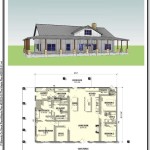Floor Plan Of Office Space
The floor plan of an office space plays a crucial role in shaping the overall functionality, efficiency, and productivity of the workplace. It determines the flow of work, the interactions between employees, and the overall ambiance of the space. When designing an office floor plan, there are several key factors to consider to ensure an optimal working environment.
1. Space Planning and Layout: The first step in designing an office floor plan is to determine the space requirements and the layout that best suits the specific needs of the business. Factors to consider include the number of employees, the type of work performed, the need for collaborative spaces, and the required level of privacy. An open-plan layout promotes collaboration and communication, while private offices provide greater privacy and focus for individual work.
2. Workstations and Ergonomics: The workstations should be designed to provide employees with a comfortable and ergonomic work environment. Proper desk height, chair support, and adequate lighting are essential for maintaining good posture, reducing fatigue, and preventing musculoskeletal disorders. Ample desk space and storage options help keep the workspace organized and efficient.
3. Collaborative Spaces and Meeting Rooms: In addition to individual workstations, it is important to incorporate collaborative spaces and meeting rooms to facilitate teamwork, brainstorming, and presentations. These spaces should be strategically placed to minimize distractions and provide a comfortable and inviting environment for group work.
4. Circulation and Flow: The floor plan should ensure smooth movement throughout the office space. Wide corridors, well-placed staircases, and clear sightlines promote efficient flow of traffic and reduce congestion. Designated break areas and kitchen facilities should be conveniently located to avoid bottlenecks.
5. Natural Lighting and Ventilation: Natural lighting and ventilation are essential for creating a healthy and productive work environment. Large windows, skylights, and open spaces allow for ample daylight and fresh air, which have been shown to improve mood, reduce stress, and enhance cognitive performance.
6. Technology Infrastructure: The floor plan should accommodate the necessary technological infrastructure to support the business's operations. This includes wiring for power, data, and telecommunications, as well as provisions for wireless connectivity. Adequate access to outlets and charging stations is crucial for laptops, mobile devices, and other electronic equipment.
7. Safety and Security: Safety and security considerations should be incorporated into the floor plan. Emergency exits, fire alarms, and security systems should be strategically placed to ensure the well-being of employees and visitors. Adequate lighting in all areas, including corridors and stairwells, contributes to a sense of security and reduces the risk of accidents.
By carefully considering these factors, businesses can design office floor plans that optimize space utilization, promote collaboration, enhance productivity, and create a comfortable and motivating work environment for employees.

Office Floor Plans Why They Are Useful

Professional Office Design Services Commercial Interior Space Planning

Office Layout Plan

Office Floor Plans Why They Are Useful

Pin Page

Office Planning For Better Organization Roomsketcher

Free Editable Office Layout Examples Edrawmax

Pin Page

Office Floor Plans Why They Are Useful

Floor Plan Pmo Akihabara Kita Al Office Building Nomura Real Estate Development Co Ltd








